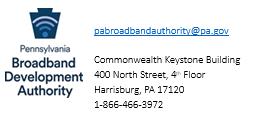- CMS: Medicare Program; Implementation of Prior Authorization for Select Services for the Wasteful and Inappropriate Services Reduction (WISeR) Model
- Public Inspection: CMS: Medicare Program: Implementation of Prior Authorization for Select Services for the Wasteful and Inappropriate Services Reduction Model
- CMS: Secretarial Comments on the CBE's (Battelle Memorial Institute) 2024 Activities: Report to Congress and the Secretary of the Department of Health and Human Services
- HHS: Patient Protection and Affordable Care Act: Marketplace Integrity and Affordability
- HRSA Announces Action to Lower Out-of-Pocket Costs for Life-Saving Medications at Health Centers Nationwide
- Public Inspection: HHS: Patient Protection and Affordable Care Act: Marketplace Integrity and Affordability
- Increased Risk of Cyber Threats Against Healthcare and Public Health Sector
- Eight Hospitals Selected for First Cohort of Rural Hospital Stabilization Program
- Announcing the 2030 Census Disclosure Avoidance Research Program
- CMS: Medicare Program; Hospital Inpatient Prospective Payment Systems for Acute Care Hospitals and the Long-Term Care Hospital Prospective Payment System and Policy Changes and Fiscal Year 2026 Rates; Requirements for Quality Programs; and Other Policy Changes; Correction
- CMS: Medicare Program; Hospital Inpatient Prospective Payment Systems for Acute Care Hospitals and the Long-Term Care Hospital Prospective Payment System and Policy Changes and Fiscal Year 2026 Rates; Requirements for Quality Programs; and Other Policy Changes; Correction
- CMS: Medicare and Medicaid Programs; Contract Year 2026 Policy and Technical Changes to the Medicare Advantage Program, Medicare Prescription Drug Benefit Program, Medicare Cost Plan Program, and Programs of All-Inclusive Care for the Elderly; Correction
- CMS: Medicare and Medicaid Programs; Contract Year 2026 Policy and Technical Changes to the Medicare Advantage Program, Medicare Prescription Drug Benefit Program, Medicare Cost Plan Program, and Programs of All-Inclusive Care for the Elderly; Correction
- CMS: Medicare Program; Prospective Payment System and Consolidated Billing for Skilled Nursing Facilities; Updates to the Quality Reporting Program for Federal Fiscal Year 2026
- CMS: Medicare Program; FY 2026 Hospice Wage Index and Payment Rate Update and Hospice Quality Reporting Program Requirements
HealthHIV’s Fourth Annual State of Aging with HIV™ National Survey Released
HealthHIV’s Fourth Annual State of Aging with HIV™ National Survey examines crucial issues affecting people aging with HIV (PAWH) and the workforce that supports them. The findings reveal four interconnected challenges: financial precarity and persistent insurance gaps that block access to essential care, declining quality of life driven by widespread mental health challenges, a shortage of aging-focused services leaving caregivers and communities unsupported, and rising frustration with the healthcare system and insufficient government protections.
The survey examines crucial issues facing long-term survivors and adults aging with HIV. For the first time, this survey has two population focuses—one that reached the PAWH community and one that reached the workforce that provides health and human services to the population. Survey data was collected between August and September 2024 and included responses from 907 participants. HealthHIV conducted the survey as part of its Pozitively Aging program, which is supported by Gilead’s HIV Age Positively Initiative.
Key findings include:
- Financial precarity and persistent insurance gaps impact the vast majority of PAWH and block access to essential care: Nearly half of respondents lack a financial plan for retirement, and the majority of those who have one are unsure if it will cover potential long-term care needs. Over three-quarters avoided or delayed seeking medical care in the last year due to concerns about insurance coverage or out-of-pocket costs.
- Continued decline in quality of life for many PAWH, largely driven by mental health challenges such as depression and anxiety: More than three-quarters (76%) of PAWH experienced moderate to high mental health stress over the last six months, and mental health diagnoses, like depression or anxiety, were the second most common comorbidity impacting PAWH.
- The gap is widening between aging services and the specific needs of PAWH, leaving them and their caregivers unsupported and without tailored resources, training or support: Most organizations recognize the need for aging-focused services, but many haven’t implemented them. Over half of providers believe that informal caregivers of older persons with HIV lack necessary support. Broader aging services are fragmented from HIV-specific programs like Ryan White, especially with transitions to Medicare.
- Increasing discontent and anger with the health care system reflects widespread community fatigue and insufficient government protections: Most PAWH (72%) feel the government isn’t adequately addressing their needs, and the vast majority of all respondents—97% of providers and 88% of community members—call for enhanced advocacy efforts for the aging HIV community.
In coordination with HealthHIV’s Pozitively Aging program, findings from this survey will be used in the creation of vital education and training materials for the HIV care workforce and will inform advocacy and research priorities for the coming year surrounding those aging with HIV.
Click here to access the full report.
Pennsylvania Partnerships for Children Releases Policy Roadmap

In December, the PPC Board of Directors approved our 2025-26 Policy Roadmap that aligns with our organizational mission to improve the health, education, and well-being of children and youth in the commonwealth.
Ensuring each child living in Pennsylvania can reach their full potential means that PPC is committed to policy choices that improve maternal and child well-being, advance racial equity and support families disproportionately impacted by poverty.
Our work to advance equitable policy solutions and prioritize the well-being of Pennsylvania children and families remains as important as ever because we can’t achieve our goals if any child is left behind.
Learn more about our priorities in these five policy areas:
- Child Welfare: Ensure each child in Pennsylvania has the opportunity to grow up in a home where they are safe and protected from abuse and neglect.
- Early Care and Education: Ensure each child in Pennsylvania has the opportunity to participate in affordable and accessible high-quality early care and education, including infant and toddler child care and pre-kindergarten education.
- Home Visiting: Ensure each child in Pennsylvania has the opportunity to grow up in a stable and healthy home environment.
- K-12 Education: Ensure each child in Pennsylvania has the opportunity for an adequate and equitable high-quality public education.
- Perinatal and Child Health: Ensure each parent and child in Pennsylvania can access affordable, quality health care.
View the new Policy Roadmap here.
Pennsylvania Announces Digital Connectivity Technology Program Funding: Round Two

In June 2024, the PBDA opened the Capital Projects Fund – Digital Connectivity Technology (Technology) Program. This program utilized $20 million of the $279 million in the Capital Projects Fund that were allocated to Pennsylvania through the American Rescue Plan Act (ARPA) of 2021.
In November 2024, the PBDA distributed over 9,000 laptops to 117 applicants, across 42 counties. These entities included libraries, municipalities, workforce training organizations, not-for-profit organizations, other community anchor institutions, in areas where affordability is a barrier. For details on the first round of approved applicants, please visit the Digital Connectivity Technology Program page.
The PBDA will open a second round of the Technology Program beginning April 1, 2025, to distribute the remaining laptops. In preparation for this second round, there will be two webinars which will provide an overview of the program, review FAQs, and outline any updates to the guidelines. Additional information for these webinars is provided in the attached flyer.
Should you have additional questions or needs, please contact the PBDA at pbda_capitalprojectsfund@pa.gov.
Updated Banking Desert Dashboard Published

While the popularity of online banking has grown, physical banking still plays an important role for many consumers. A lack of access to banking services can mean losing opportunities to improve financial health and build wealth.
Originally created by Alaina Barca and colleagues from the Federal Reserve Banks of Philadelphia and Cleveland, the Banking Deserts Dashboard has just been updated. Those updates include the release of 2024 banking desert data, and user experience improvements like an underlying base map to better orient users to census tract locations and an overall friendlier user experience.
Check out the dashboard to identify banking deserts and potential banking deserts across the United States. Across the nation, all the way down to counties, this dashboard uses census tract data to paint a geographical picture of where deserts and potential deserts are located.
A New Legislative Session – An Ongoing Commitment to Oral Health

A new legislative session in Pennsylvania kicked off last week, launching a two-year period for lawmakers to address critical priorities in the commonwealth. Amidst a variety of issues set for debate, PA Coalition for Oral Health remains dedicated to advancing policy changes that strengthen oral health infrastructure in Pennsylvania.
To guide our advocacy efforts, we are introducing the PCOH 2025 Policy Agenda. Shaped by PCOH strategic goals, this is our roadmap to promote better oral health outcomes across Pennsylvania.
Bird Flu Exposure Prevention – Employer Checklist
The Western Center for Agriculture created this checklist for employers of farmworkers to decrease risk of H5NI exposure. Available in both English and Spanish, it covers California-specific regulations in addition to guidance on written procedures, sanitation, biosecurity, training, personal protective equipment, and medical care.
CMS Announces Selection of States Participating in the Innovation in Behavioral Health Model
In December, the Centers for Medicare & Medicaid Services (CMS) announced four states will participate in the Innovation in Behavioral Health Model (IBH Model). The selected states are Michigan, New York, Oklahoma, and South Carolina. The IBH Model is a collaboration between CMS and state Medicaid agencies to build a model that provides integrated care to Medicaid and Medicare populations with moderate-to-severe mental health conditions and/or substance use disorder (SUD). Model implementation began on January 1, 2025.
HIPAA Security Rule Notice of Proposed Rulemaking to Strengthen Cybersecurity for Electronic Protected Health Information
– Comment by March 7. On January 6th, 2025, the Office for Civil Rights (OCR) at the U.S. Department of Health and Human Services (HHS) issued a proposed rule to modify the Health Insurance Portability and Accountability Act of 1996 (HIPAA) Security Rule to strengthen cybersecurity protections for electronic protected health information. The proposal will strengthen the Security Rule’s standards and implementation specifications with new proposals and clarifications. This rule will impact hospitals, providers, health plans, and any other entity that use or transmit electronic protected health information. Comments are due March 7, 2025.
CMS Rural Community Hospital Demonstration
– Apply by March 1. The Centers for Medicare & Medicaid Services (CMS) is conducting a new solicitation to select 10 hospitals to participate in the Rural Community Hospital Demonstration. This demonstration tests the feasibility and advisability of paying rural hospitals with fewer than 51 beds and that are not eligible to be Critical Access Hospitals cost-based reimbursement for Medicare inpatient services. Per statute, CMS can only accept applications from hospitals in the 20 least densely populated States, according to data for 2020 from the U.S. Census Bureau: Alaska, Arizona, Arkansas, Colorado, Idaho, Iowa, Kansas, Maine, Mississippi, Montana, Nebraska, Nevada, New Mexico, North Dakota, Oklahoma, Oregon, South Dakota, Utah, Vermont, and Wyoming. The demonstration began in 2004 and has been extended three times. The current 5-year period of participation ends June 30, 2028. Hospitals currently participating in the demonstration do not need to complete a new application. If you have questions about the demonstration, please email RCHDemo@cms.hhs.gov.
CDC Providing Updates About H5N1 Bird Flu
While H5N1 bird flu is caused by viruses that most commonly affect birds and poultry, they can also affect cows and other animals. The Centers for Disease Control and Prevention (CDC) keeps most recent information at cdc.gov/bird-flu, including a series of brief videos – each 30-45 seconds – with answers to frequently asked questions. See Resources of the Week below for related information.
